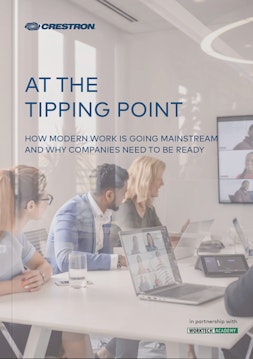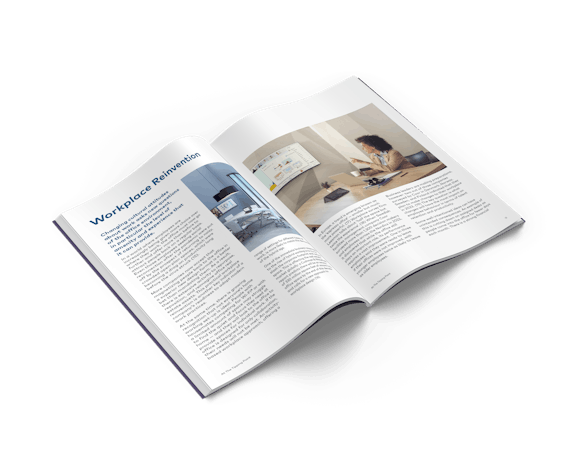At the tipping point: are firms ready for modern work practices?
If last year was about experimenting with flexible work and digital technology, 2023 is becoming all about mass adoption. A new report from Crestron says that companies need to be prepared
Large organisations have reached a ‘tipping point’ in the adoption of new practices which are based around flexible work patterns and supported by digital technology, according to a new report from Crestron Electronics, a global specialist in corporate automation and unified communications.
If 2022 was a year of experiment, iteration and evaluation — of trial and error — in responding to new ways of working, 2023 has taken on a different character. The story now is all about large-scale adoption and implementation as companies look to settle on a formula.
‘The story now is all about large-scale adoption…’
Crestron uses the term ‘modern work’ to describe new practices currently being adopted, believing that the term ‘hybrid working’ does not do justice to the scale of changes currently underway.

Its report ‘At The Tipping Point: How Modern Work Is Going Mainstream And Why Companies need to be Ready’ is organised in three sections: cultural re-evaluation, workplace reinvention and digital transformation. This structure reflects the complex fusion of people, place and technology in ‘modern work’. The report, which was produced in partnership with WORKTECH Academy, presents top trends in each area. Its key question to large firms is: are you ready to meet the challenge?
Moment of critical mass
The idea of the ‘tipping point’ idea was first popularised by US author Malcolm Gladwell who wrote a book with this title in 2000. Gladwell describes a tipping point as ‘the moment of critical mass…that magic moment when an idea, trend, or social behaviour crosses a threshold, tips and spreads like wildfire’.
The Crestron report identifies that organisations with a higher level of preparedness for modern work tend to have a clear and unambiguous policy that gives employees more choice and control over how they work, provides opportunities for in-person as well as remote collaboration, and focuses on building social and cultural capital in the workplace.
The study further suggests that organisations equipping themselves the best for modern work are putting in place a range of video-enabled meeting rooms of different sizes, allowing staff to connect without delay, and making a commitment to improving meeting equality for all participants, in-person and remote. Design of the work environment also play a key role by creating a sense of place, meeting sustainability goals, and supporting creativity and collaboration.
Readiness score
The report introduces Crestron’s Modern Work Readiness Score to help companies assess how well-equipped they are to address the opportunities and challenges of the new work era. The Modern Work Readiness Score is a short, simple survey tool which asks a series of 20 questions about the integration of people, place, and technology in your organisation.
The message from Crestron’s survey is unambiguous: it advocates both digital preparedness and an alignment of technology with HR policies and space plans so that there is an holistic approach to modern work.

Read the Crestron report, ‘At The Tipping Point: How Modern Work Is Going Mainstream And Why Companies need to be Ready’ here.








